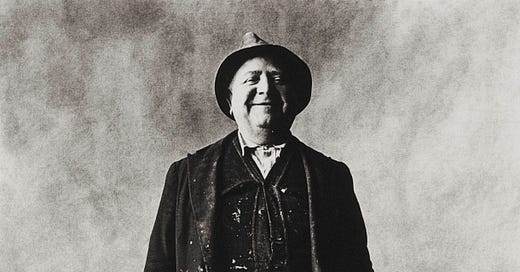It feels like a lifetime ago, but it’s only been a dozen years since I had the opportunity to pick the brain of a former bank executive who’d just lived through a balance sheet crisis not dissimilar, at least in part, to what Silicon Valley Bank has just put the worldwide bank system and innovation economy through.
I’d been actively kicking around the idea of starting a de novo U.S.-based tech lender for a number of months at that point, on “the side of my desk” as they say, and the time was right to find an experienced Treasurer. I knew I needed a specific skill-set, and, at that point, there were only four management teams with any Tech & Life Sci banking experience. Both SVB and Comerica were too large to poach from, and the only small comps of any relevance were California-based Bridge Bank and North Carolina’s Square 1. BB and SQ1 grew dramatically in advance of their respective acquisitions in 2015, and you’d be amazed just how small a business they were in 2010-11.
Who better to help build out a business plan than someone who’d been at Square 1 Bank during its early years, and weathered the 2008 financial crisis? Plumbing matters in any business, particularly banking.
You’ll have to wait for my book to get the ins-and-outs of that career phase, but I’ll never forget that story I was told one Pinehurst, N.C. evening about Square 1’s near death experience in the last quarter of 2008, courtesy of — you guessed it — a portfolio of mortgage-backed securities.
The precise details are a bit hazy at this point, but my recollection is that SQ1 lost $40 million of its ~$126 million of equity capital when its portfolio of Mortgage-backed Securities took a pasting during the financial crisis. For a bank to lose ~33% of it’s capital base due to what it had understandably believed were safe investments of the institution’s excess liquidity will sound very familiar to anyone paying attention to what recently felled SVB after a successful 40-year run.
SQ1 was able to find a merchant bank to help recapitalize the institution, and when PacWest acquired the bank a few years later, Patriot Financial Partners did very well on their Buffet-like investment. I don’t recall exactly why SQ1 didn’t suffer a “run” back then, but given the mayhem of 2008-09, and the fact that the investment portfolio loss didn’t dwarf the bank’s capital base, unlike SVB’s unrealized M-T-M losses, it makes sense.
In late 2008, SQ1 had deposits of just over $1.1 billion. When combined with the bank’s capital of just under $90M at that point, the liquidity was deployed in a few classic ways:
Cash: $260M (24%)
Available for sale investments: $563M (51%)
Held to maturity investments: $11M (1%)
Loans: $404M (37%)
Now, compare this piker of a balance sheet to what SVB CEO Greg Becker and CFO Daniel Beck put together late last year with our ~$212B of assets:
Cash: $14B (7%)
Available for sale investments: $26B (12%)
Held to maturity investments: $91B (43%)
Loans: $74B (35%)
Other: $3B (1%)
In hindsight, it’s pretty clear why SQ1 didn’t experience a run when it disclosed the $40M MBS loss. Between cash on hand and the “available for sale” securities portfolio, that team had access to 75% of its balance sheet. Compare that situation to SVB, with just 19% of assets in what could be termed available liquidity, despite the stark backdrop: a huge swoon in tech sector valuations, not to mention a looming recession.
These senior-level SVB leaders were supposed to be the best, and yet they appear to have not learned a key lesson that arch-rival Square 1 endured not too many moons ago: one that came at a deep cost to shareholders as well as a few careers. One that I wanted to understand first-hand in early 2011 before going too far down by own bank licence road.
One industry wag wondered if this was the Peter Principle at work, but, surely, it can’t be as simple as that. And yet, if Greg Becker didn’t have the self-awareness to take off his Gleneagles (a luxury golf resort in Scotland) zip-up jacket before shooting what’s been reported as an emotional team video, perhaps it is just that simple.
One thing’s for sure, he’s certainly no dumb-dumb: his $3.6 million share sale, just two weeks ago, with another $1 million offed in January, was incredibly well-timed (edit: via a pre-arranged Rule 10b5-1 trading plan entered into on Jan 26/23). And will only compound the truly aghast reaction across the ecosystem this weekend, as SVB’s client entrepreneurs try to figure out to how to make payroll next week.
MRM
(this post, like all blogs, is an Opinion Piece)
Photograph: Plumber, New York, 1951, by Irving Penn, from his Small Trades series.





Coincidentally I believe SVB’s ill-fated leader was the hapless CFO at Lehman in ‘08.